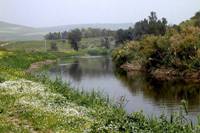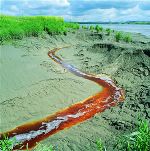
For thousands of years religious people have embarked on pilgrimages to hallowed sites that are venerated on account of the events that transpired there or the persons that dwelt there. Enduring great physical, mental, and economic costs, religious pilgrims make such journeys; and, for what “gains” do such pilgrims strive after? Purification? Transformation? Enlightenment? Intimacy with the divine? Multitudinous motives inspire the intrepid pilgrim, yet sometimes the journey itself (in contrast to the destination) proves to be the formative experience. Whether it is the journey or the destination (or a combination of both) that ultimately leaves the life altering imprint on the pilgrim, the transformative nature of the sacred is of primary concern. So, what happens when the sacred sites becomes polluted?

Recently, Israel’s Ministry of Health restricted public access to the site on the Jordan River in Qasar al-Yahud where Jesus was believed to be baptized by John. Due to water samples that registered “high levels of raw sewage and agricultural chemicals” drawn from the location where close to 100,000 pilgrims trek annually, the Ministry has stretched hazard tape, posted signs warning of “pollution as well as land mines,” and issued a military decree in order to protect the health of pilgrims seeking to obtain a sample of the Jordan or to be baptized, themselves, in the sacred river. [Although, the civil agency governing the area may allow pilgrims to pass under armed escort if a permit has been secured.]
The Ministry of Health’s decision to restrict access to the site has not been well received by all parties involved. A $2 million renovation “aimed at attracting more pilgrims to what is the third most important Christian site in the Holy Land” has been stalled, and a representative from the Tourism Ministry remarked: “We invested a lot of money in this site – it is going to be open, clean and convenient for all pilgrims. We will do everything to keep the site open. We believe it’s safe to be baptised in this water.”
According to Friends of the Earth Middle East (FoEME) the cause of the Jordan’s pollution is “a result of raw sewage coming from Israeli, Palestinian and Jordanian sources, plus agricultural run-off – largely pesticides and fertilisers – and hormone-enriched effluent from fish farms.” Given the high levels of pollution, FoEME hopes the site will be temporarily closed to protect pilgrims’ health and that steps be taken to rehabilitate the river.
What happens and what does it mean when sacred sites become polluted? If pilgrims travel to sacred sites for regeneration, where do sacred sites turn for their salvation? For those who are pilgrims on the journey through life, may meditating on the current state of the Jordan provoke a change of perspective? On the surface, the river’s polluted state disappoints a host of striving pilgrims and disrupts commerce; yet, below the surface, the river’s polluted state poisons the life that lives in the river, on its banks, and for miles downstream. Children and adults, fish and frogs, reeds and soil suffer from the recklessness of human pilgrims. Hopefully reflecting on the despoiling of sacred sites will encourage us, the human pilgrims, to perceive and cherish the sacredness of the world that surrounds us all.
Links
To read “Pollution Fears at River Jordan Pilgrimage Spot” by Harriet Sherwood of the Guardian click here.


